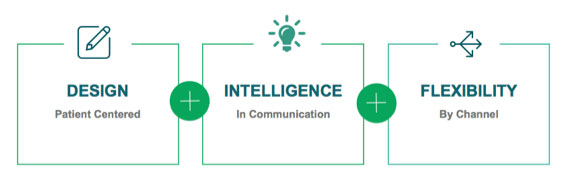January 30, 2018
Eight Ways to Improve Patient Payment Journeys

 With a larger share of payments coming directly from patients, healthcare providers have seen a negative impact on profits. The typical patient was responsible for $1,820 in deductible payments and $4,400 in out-of-pocket costs in 2017. While hospitals and practices collect approximately 90 percent of reimbursements from insurance payers, they typically receive only 35 cents on every self-pay dollar billed, according to The Advisory Board.
With a larger share of payments coming directly from patients, healthcare providers have seen a negative impact on profits. The typical patient was responsible for $1,820 in deductible payments and $4,400 in out-of-pocket costs in 2017. While hospitals and practices collect approximately 90 percent of reimbursements from insurance payers, they typically receive only 35 cents on every self-pay dollar billed, according to The Advisory Board.
The good news is providers can increase patient payment rates by implementing best practices and technology used by hyper-customer-centric industries, such as financial services, retail and even healthcare-related practices that have traditionally relied on out-of-pocket payments.
- Engage patients by increasing their happiness factor.
Traditional systems and practices can take a cue from health-related companies with a high number of patients paying out of pocket. Orthodontists, cosmetic dentists and medical spas use consumer-driven contests, games and movie nights to keep patients engaged. Figure out how you can use your existing systems in fresh ways. For example, in addition to sending balance-due alerts and offering payment by phone, outbound interactive voice response systems (IVRs) can send personalized birthday messages and special offers that promote engagement and on-time payments. - Use design thinking when creating patient communications.
Consumer electronics designers consider how end users will interact with the product before creating it. Paramount to successful design is customer empathy. In healthcare, this same design approach can start with something as innocuous as billing statements. The statement is usually the first communication vehicle the patient sees after the clinical encounter. Tailored billing statement design combines art and science. Providers have two to three seconds to make a favorable impression with billing communications. Statements must be easily decipherable and organized to match the gaze path of readers. Design principles also apply to online payment portals and mobile alerts. Providers should implement responsive designs that automatically render correctly on mobile devices or tablets. RevSpring tests and re-tests statement and payment portal designs to understand what optimally engages a patient or demographic groups of patients. - Communicate with patients on their terms.
A patient may want to receive bills and statements via postal mail, email, text message or a combination of communication modes. Ask how they wish to receive billing statements and balance-due information on the first visit. Technology can make this effort easier. RevSpring uses analytics in many of its products to predict which payment communication channel will be most effective for each patient. - Be transparent pre-visit.
While many practices and health systems introduce the payment and billing process after the care encounter, it’s more efficient and effective to be up-front with self-pay patients before the visit. Some patients delay paying because they simply don’t understand how their insurance works or the specific coverage they have. Providing coverage clarifications, payment options, co-pay obligations and charity care eligibility upfront increases patient satisfaction. - Allow patients to pay their way.
Healthcare organizations must offer a variety of payment options tailored to demographic preferences, from writing checks to online payment portals. For example, millennials want text message bill alerts and the ability to pay their medical bills via a mobile device. - Get it in writing.
A well-written payment policy helps patients anticipate what you expect from them and what they can expect from you. It also gives your practice legal protection if you fail to collect balances due.Ask patients to sign a payment contract on their first visit so they truly understand their financial obligations and consequences for nonpayment and missed appointments. - Embrace testing, intelligence and analytics.
The financial services industry has been A/B testing consumer communication preferences for years. They understand every consumer has particular likes and dislikes. Now healthcare should implement this practice to stay profitable. Providers, billing department executives and office managers need data at their fingertips in order to make decisions. Some providers don’t know how many billing statements are sent each month or which patients are in 30-, 60- or 90-day delinquent categories. Healthcare organizations must embrace business intelligence and analytics used successfully in other industries to understand their data first and then improve their back-office practices. - Consider lasting impressions.
Providers should strive to increase patient engagement and payment rates with communication and billing journeys tailored to patients’ preferences and needs.
Learn more about RevSpring’s products that enhance patient payment journeys for health systems and practices.